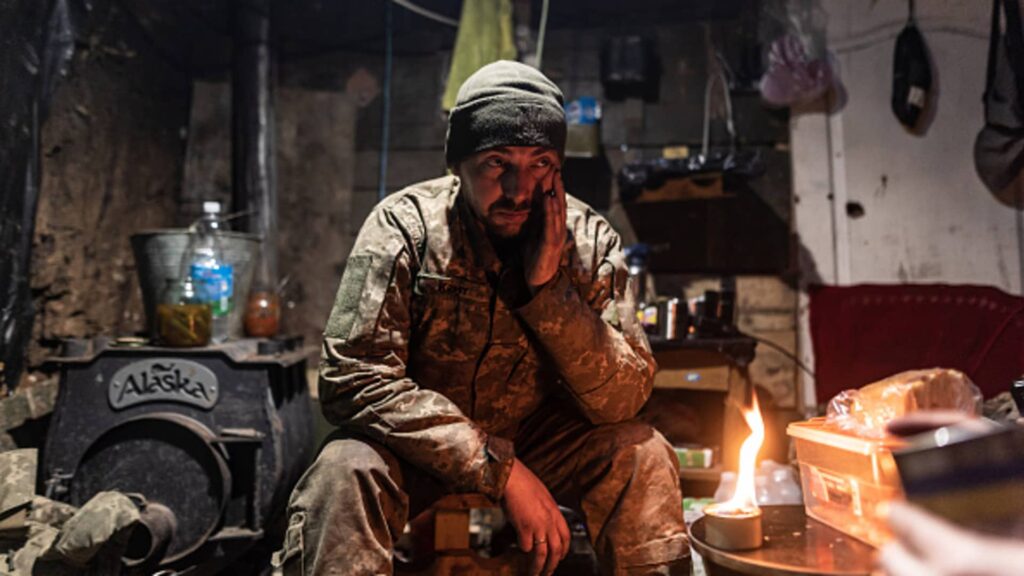A Ukrainian soldier in a shelter at his fighting position in the direction of Bakhmut, Donetsk Oblast, Ukraine, 20 February 2024.
Anadolu | Anadolu | Getty Images
When Russia invaded Ukraine two years ago, the stout resistance mounted by the country’s armed forces and overwhelming Western support for Kyiv — along with some obvious military overreach by Moscow — raised hopes that Ukraine’s outnumbered and outgunned army could beat back the invading forces.
Fast forward two years and hopes of a Ukrainian victory look diminished and increasingly hollow, as do Western pledges to support Ukraine “for as long as it takes.”
As it stands, billions of dollars worth of American military aid remains unapproved with further struggles likely ahead, as war and funding fatigue grow in the run-up to the U.S. presidential election — a vote that could see an administration installed that’s less sympathetic to Ukraine’s war needs.
On the battlefield in Ukraine, meanwhile, the front lines have been broadly static for months, save for recent gains that have been made by Russian forces in the east of the country.
Kyiv continues to insist it is not being given the proper tools to fight Russia as effectively as it could, and there have been reports of morale ebbing among front-line forces who are facing ammunition and personnel shortages. Internal political frictions and the replacement of popular military chief Gen. Valerii Zaluzhnyi has also fueled concerns over military strategy going forward.
“This year is the most difficult year for Ukraine that there’s been so far in this war, in part because of the disconcertion over Zaluzhnyi being replaced and the retreat from Avdiivka, but mostly, because of the massive uncertainty over the level of Western assistance and aid,” James Nixey, head of the Russia and Eurasia program at think tank Chatham House, said Monday.
“I think for Ukraine, there’s really quite minimal difference between a president who can’t deliver lethal aid and a…
Read the full article here





